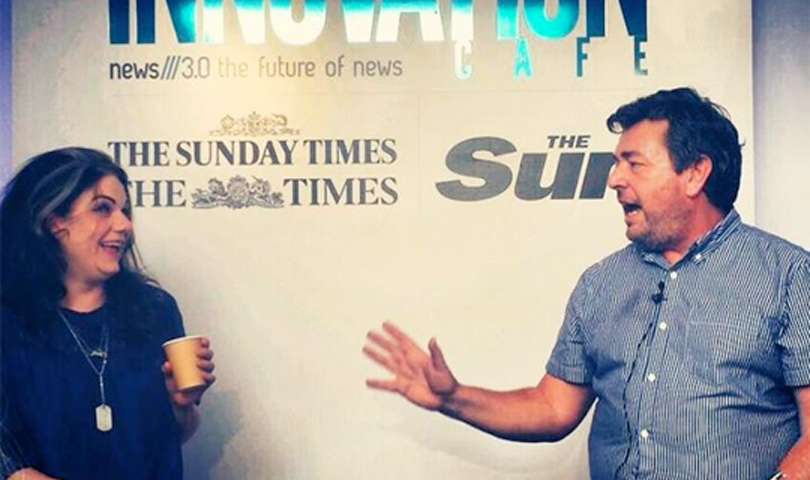The Future Of Journalism And Social Media
SHARE
Pete Marcus
25 Sep 2013
On Friday, Innovation Café hosted a talk on “the future of journalism and that thing called social media”, hosted by Caitlin Moran and David Aaronovitch. Taking place in the world’s hottest room, Caitlin and David entertained the audience for over an hour talking through their experiences online and how they see it changing the media landscape. For some of our favourite quotes, check out the @Harvard_PR twitter handle; meanwhile below, we look at some of the key takeaways from the event.
1. We live in a world of opinion
Thanks to social media, everyone can now be a part of the conversation. There’s no barrier – meaning that we can all share our opinion. This has created a new experience level, allowing us to engage and share our thoughts in real time. This has affected a number of industries, but perhaps most prominently is the effect on television, where social media has led to a running commentary on many programmes. David even gave an example of how people now go to the Hackney Empire to watch Question Time together … to tweet about it.
2. Kids are eating their own future
The way in which we consume content is slowly dissipating the industry. Caitlin put forth a phenomenal argument on the way in which working-class children are eating their own future – destroying an industry which many will try to gain entry in to (and one which doesn’t have a class barrier). Her description of children who have 6,000 downloaded (for free) songs on their iPods, and then interview for an internship at a music company struck a chord. Caitlin summed up the attitude saying:
“Behind the paywall or just paying for things.”
Have we become a society where we don’t want to pay for content? If so, who are we leaving the industry open to? And how much talent will we lose?
3. Social media helps you monitor breaking news that you might otherwise miss
An excellent point that Caitlin and David discussed was the value of social media (and particularly Twitter) and whether it was a tool that could focus you, or, distract you from a deadline. The answer? A little bit of both. David pointed to the manner in which the Gaddafi story broke and how he first saw it on Twitter, leading him to read the breaking news on a site he would never usually visit.
4. It’s also changing the way people tell their story
We have probably all experienced the way in which Twitter and other social media networks are changing the way we break news – or indeed, how it is broken for us. As an industry, we understandably focus on the impact on our client or news pipeline, but what are the ramifications for the media? Caitlin talked about the changing way in which celebrities sell their stories, and how for many, Twitter is simply becoming a platform where they can tell it themselves. For other journalists, the impact of a broken embargo can affect a pay-check. Both scenarios point to a future of uncertainty for journalists.
5. You can reach anyone, anywhere
Yet, equally, social media has also altered the amount of people one story can reach. David pointed to a story he had written that was read by President Obama, who liked it and told John Kerry, who told George Osborne … Caitlin’s priceless response of “yeah, well I got re-tweeted by Adele” emphasised the way in which Twitter has broken down barriers and made everyone accessible to, well, everyone else.
For more insightful opinions and hilarity you can follow both Caitlin and David on Twitter, they are @caitlinmoran and @DAaronovitch respectively.

